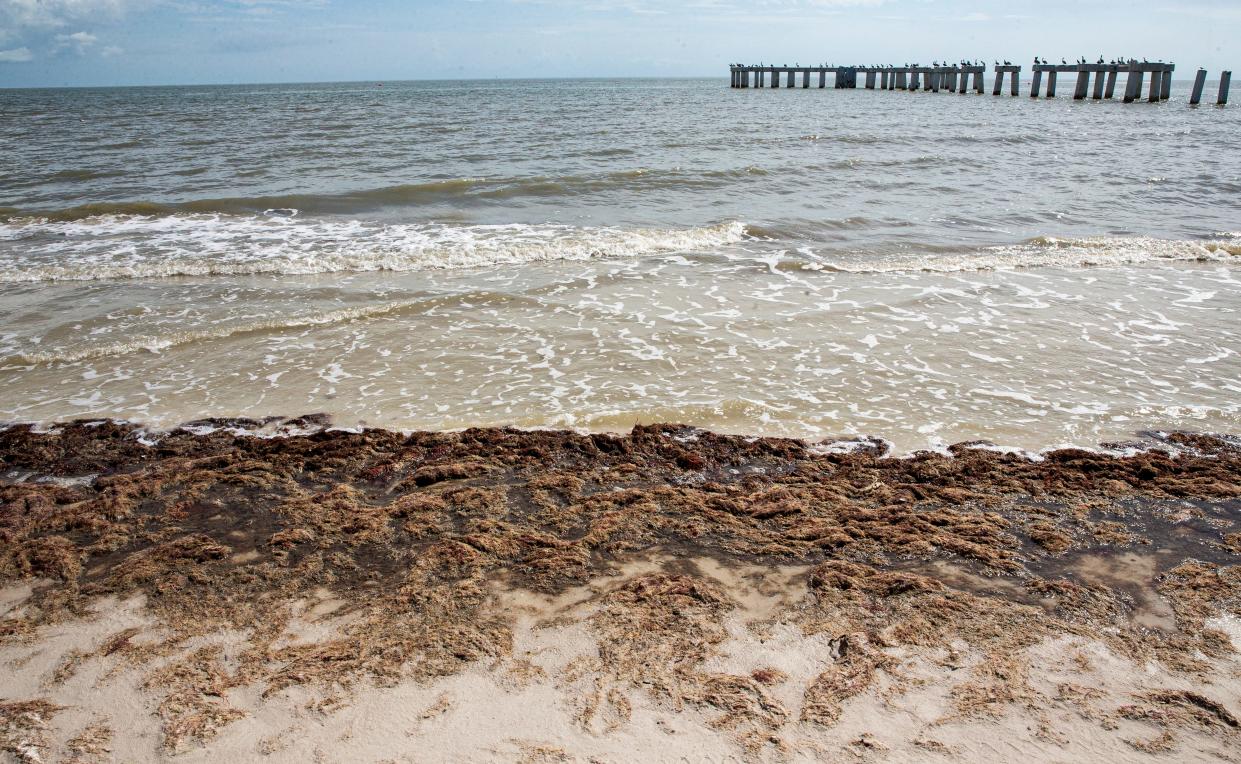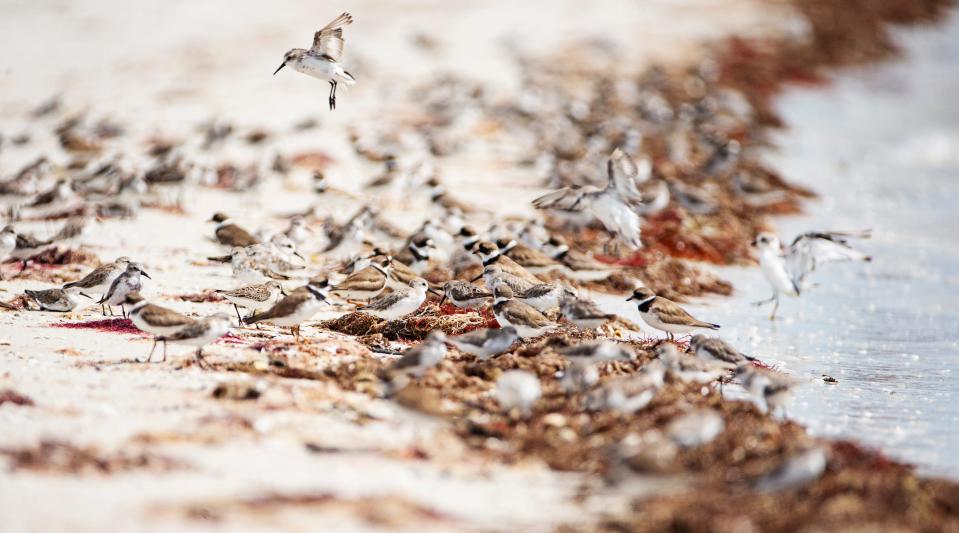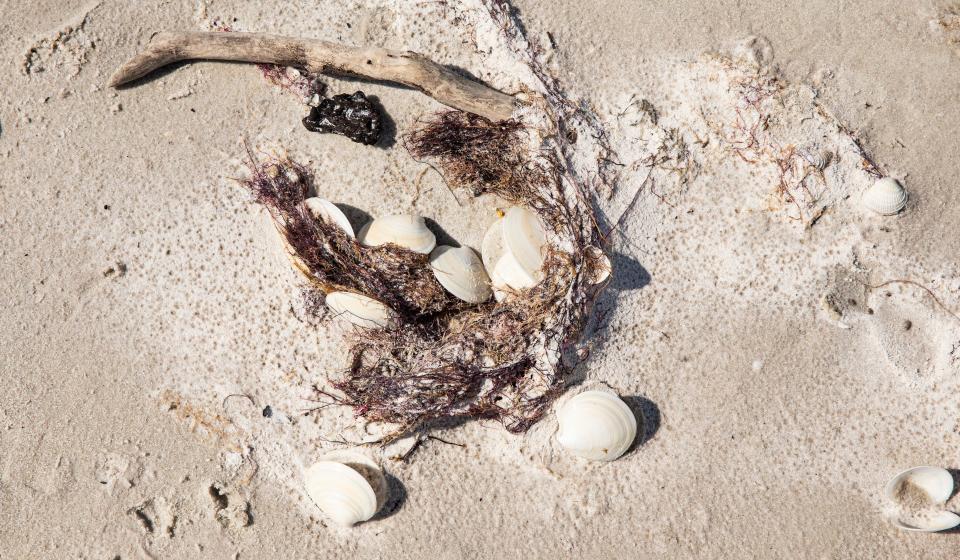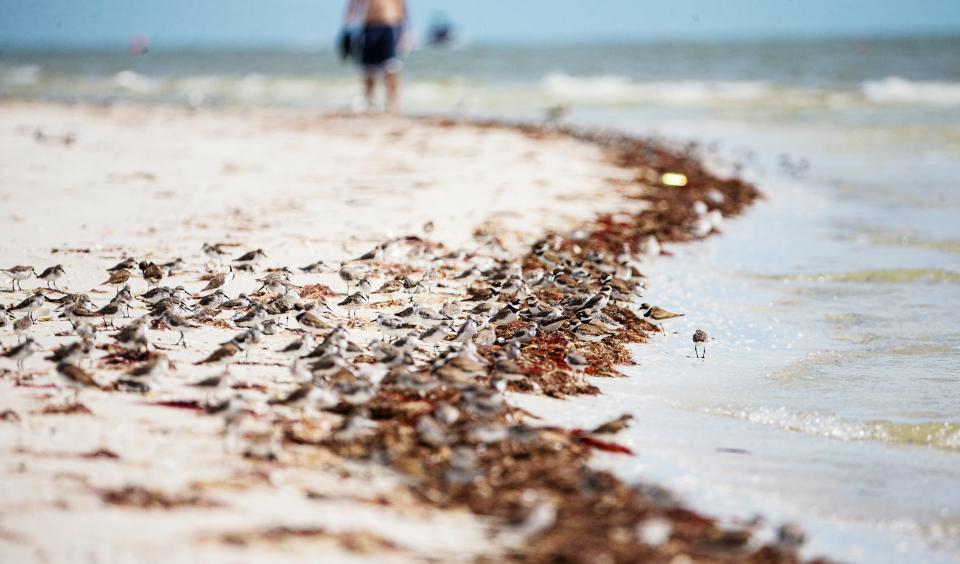What's that piled up on Southwest Florida beaches? A guide to the wrack line

It washes up on local shores from the Gulf of Mexico and consists of everything from red drift algae to Portuguese Man 'O War.
It's called beach wrack, and it's a normal part of a natural, unmanicured shoreline.
Although many national media outlets suggested earlier this summer that a massive floating blob of sargassum would engulf of Sunshine State this summer, Southwest Florida has not experienced massive piles of sargassum this year.
Beach wrack, however, is a different story as it's been found at places like Fort Myers Beach and Bonita Beach, ranging from a spattering of sponges to a 3-foot-wide, 3-inch-tall drift algae mini-berm.
A type of moving marine habitat that often marks recent high tide lines, beach wrack is a healthy and natural cycle that helps keep beaches stable and intact.
Red drift algae is natural
Most of what we're seeing this year is red drift algae, which is common in coastal bays during summer months.
"There's a whole list of red drift algae, and they're a normal part of many systems," said Ed Philips, an algal ecology professor at the University of Florida. "They're an important part of the ecosystem."
Drift algae in some years becomes overly abundant and has to be mechanically removed from beaches.
But in most years, like this one, the drift algae and the wrack community are a small part of the coastal ecosystem.
"In general, red algae are not toxic," he said. "They also compete with nutrients in the water column with phytoplankton. And they can help balance the nutrients loads in regards to harmful algal blooms that we're concerned about."
Harmful algal blooms would include things like blue-green algae and red tide for this region.
Is red drift algae becoming more common?

Many scientists and water quality experts say Florida's waters have been tainted by nutrients that are added to the landscape by human activities like farming and development.
Excess nutrients feed toxic blue-green algae blooms and can fuel red tide in nearshore and bay waters.
One local scientist says the balance and distribution of red drift algae has shifted in recent decades: where once there was a mixture of plants, coral and critters, nowadays the wrack is mostly red drift algae.
"Though red drift algae has always been here, we think the amounts have been creeping up over the years due to progressive eutrophication," said Florida Gulf Coast University professor and researcher James Douglass. "If you went back 100 years there would be a lot of seagrass with a little bit of red macroalgae mixed in, but now it's like a lot of red macroalgae with a little bit of seagrass mixed in."
Eutrophication is a term used to describe excess nutrients in a waterbody, and the process has happened to nearly all of Florida's waters in the past century.
What's in the wrack?

More: Bacteria found at Bonita Beach may have come from humans, health officials say
Sea shells, sponges, jellyfish and even sea turtle hatchlings can be found in beach wrack, according to the state agency charged with protecting wildlife.
"Most people generally call this seaweed, but there are other interesting things in the wrack that help keep the beach alive and stable," a Florida Fish and Wildlife Conservation Commission website reads. "The wrack serves as food and shelter for wildlife, and it is important to leave it on Florida beaches."

More: Should we abandon parts of coastal SWFL? At least one climate planner thinks we should
Beach wrack also helps reinforce beaches by leaving organic material that piles up in clumps, and it helps keep sand on beaches as it combats erosion as well.
Turtle grass, hamburger beans, sheepswool sponges, mollusks, sand dollars and sea pork ‒ it can all be found in the wrack.
The marine life that makes up wrack is largely washed ashore during storms and strong onshore breezes.
Connect with this reporter: Chad Gillis on Facebook.
This article originally appeared on Fort Myers News-Press: What is beach wrack? Everything from seaweed to jellyfish

